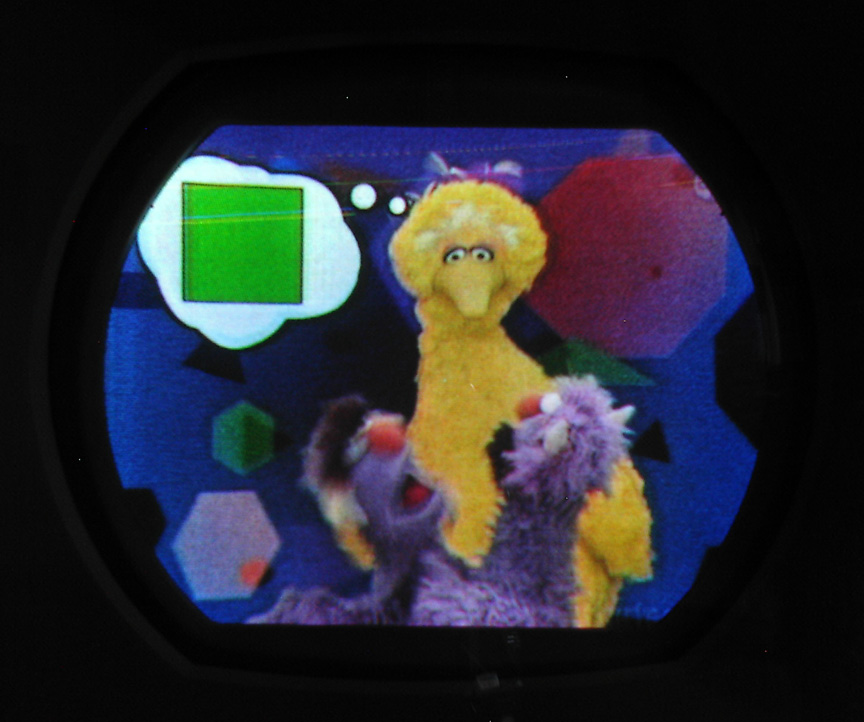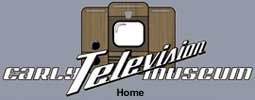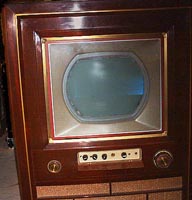
Photo taken November 29, 2005, from an over-the-air broadcast of Sesame Street on WNET channel 13, a New Jersey station stuck to Manhattan. The visible sloping lines in the upper part of the picture are test signals such as a line of the color bar pattern, placed by WNET on lines normally left blank by other stations, so older sets that do not recover from retrace as quickly as modern sets have time to get the sweep circuits back to the origin. These lines do not appear on modern sets and no other area broadcaster causes these lines to be visible on the CT-100. Of course, it's okay to crop and re-size in Photoshop.
|

